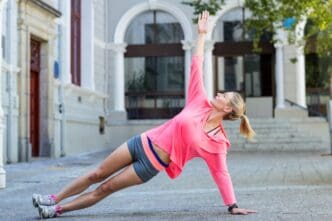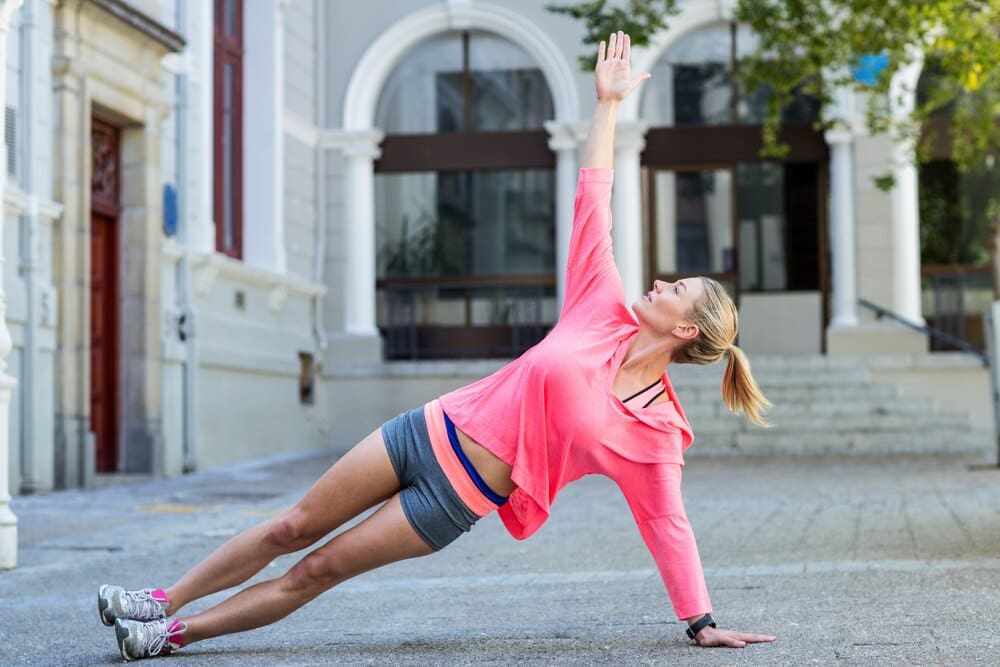For runners of all levels, from weekend joggers to elite marathoners, the secret to a more efficient, powerful, and injury-resistant stride isn’t just in the legs—it’s in the arms. Proper arm swing is a critical and often-neglected component of running form that directly impacts your performance. By providing crucial counterbalance to the lower body, driving forward momentum, and setting the rhythm for your cadence, a correct arm swing synchronizes your entire body, conserving precious energy and helping you run faster and farther with less effort. Mastering this movement is a fundamental step for anyone looking to improve their running economy and overall experience on the road or trail.
Why Your Arms Are More Than Just Accessories
Many runners operate under the misconception that running is an activity driven exclusively by the lower body. The legs and glutes are the engines, certainly, but the arms and torso are the steering and stability systems. Ignoring them is like trying to drive a car by only pressing the gas pedal, without ever touching the steering wheel.
The human body functions as a kinetic chain, an interconnected system where movement in one part affects all others. Your arm swing is not an isolated action; it is an integral part of the gait cycle. It works in opposition to your leg stride to create a fluid, coordinated, and efficient forward motion.
When you neglect your arm swing, your body must find other, less efficient ways to compensate. This often results in wasted energy, a compromised posture, and an increased risk of injury as other muscles work overtime to maintain balance.
The Science of the Swing: How Arms Drive Performance
The contribution of the arm swing to running is not just anecdotal; it is grounded in the principles of biomechanics and physics. Understanding this science can help you appreciate why focusing on your upper body is a worthwhile investment in your training.
Counterbalancing and Stability
As you run, your legs generate significant rotational force, or torque. When your right leg moves forward, it naturally wants to twist your pelvis and torso to the right. To counteract this, your left arm swings forward, creating an opposing torque that keeps your upper body stable and facing forward.
This reciprocal motion is essential for balance. Without a proper arm swing, your core muscles would have to work much harder to fight this rotation. The result is often an inefficient, twisting motion in the torso, which diverts energy that should be used for forward propulsion.
Propulsion and Momentum
While the primary propulsive force in running comes from the powerful muscles in your legs and glutes pushing off the ground, your arms provide a significant assist. A strong, backward drive of the elbow helps to propel your body forward, working in concert with the opposite leg.
Think of it this way: a powerful arm swing helps to lift your body slightly, reducing the braking forces that occur with each footstrike. This creates a smoother, more continuous forward momentum, preventing the “bouncing” or plodding style that can be so fatiguing.
Energy Conservation (Running Economy)
Running economy is a measure of how efficiently your body uses oxygen at a given pace. The better your running economy, the less energy you expend to run a certain speed. An effective arm swing is one of the pillars of good running economy.
When your arms are relaxed and swinging efficiently, they minimize the need for compensatory movements elsewhere. Poor form, such as arms crossing the body’s midline or tense, raised shoulders, forces other muscles to engage constantly to stabilize your trunk, burning through energy that could be used to maintain your pace.
Rhythm and Cadence
Your arm swing and leg turnover (cadence) are neurologically linked. The rhythm of your arms sets the tempo for your legs. If you want to increase your cadence—a common strategy to reduce overstriding and impact forces—the easiest way to initiate this change is by quickening your arm swing.
By consciously focusing on a faster, more compact arm swing, your legs will naturally respond by taking quicker, lighter steps. This makes arm swing a powerful and intuitive cue for making subtle, but important, adjustments to your overall running gait.
Deconstructing Proper Arm Swing Form
Achieving an effective arm swing is about finding a relaxed, natural motion. It shouldn’t feel forced or rigid. Here are the key components to focus on.
The Ideal Elbow Angle
Your elbows should be bent at a consistent angle of approximately 90 degrees. This angle should remain relatively constant throughout the entire swing. Avoid the common mistakes of letting your arms straighten out on the backswing or bending them too tightly up toward your chest.
Shoulder Relaxation is Key
The swing should originate from your shoulders, which should act like relaxed hinges. Many runners carry tension in their shoulders, causing them to hunch up toward their ears. This restricts movement, wastes energy, and can lead to neck and upper back pain.
During your run, perform periodic “form checks” by taking a deep breath and consciously dropping your shoulders down and back. The goal is a powerful swing driven from the shoulder, not a frantic pumping motion from the elbows.
The Path of Motion: Forward and Back
The primary direction of your arm swing should be forward and backward, parallel to the direction you are running. A slight inward drift is natural, but your hands should never cross the imaginary centerline of your body. A common and helpful cue is to think “hip to lip” or “pocket to chin”—your hand swings from beside your hip on the backswing to roughly chin level on the forward swing.
Hand Position: Loose and Light
Your hands should be relaxed, not balled into tight fists. Clenching your fists creates tension that radiates up your forearms, into your biceps, and finally into your shoulders. This is a classic energy leak.
Instead, hold your hands in a gentle, cupped position, as if you were trying to protect a delicate potato chip or butterfly inside your palm. Your thumb can rest lightly on your index finger. Keep them loose enough that you could shake them out at any moment.
Common Arm Swing Mistakes and How to Fix Them
Identifying and correcting flaws in your arm swing can lead to immediate improvements in your running comfort and efficiency.
Mistake: Crossing the Midline
This is when your arms swing side-to-side across your chest. It’s one of the most common form errors and causes your torso to rotate, wasting energy and disrupting your balance.
The Fix: Focus on driving your elbows straight back. A proper backswing naturally sets up a proper forward swing. Practice in front of a mirror or have a friend record a short video of you running. The “hip to lip” cue is especially effective here.
Mistake: Tense Shoulders and Clenched Fists
This involves shoulders hunched up by the ears and tightly balled fists. This form is a recipe for upper body fatigue and restricted, inefficient movement.
The Fix: Make conscious relaxation a part of your run. Periodically shake out your arms and hands to release tension. Exaggerate dropping your shoulders. Remember the “potato chip” hand position to prevent clenching.
Mistake: The “T-Rex” Arms
This describes holding the arms high and tight against the chest with very little swing, resembling the small arms of a Tyrannosaurus Rex. This severely limits momentum and can even constrict your breathing.
The Fix: Lengthen your swing by focusing on the backward motion. Think about driving your elbow back to open up your chest. This will naturally create a more powerful and effective forward swing, breaking you out of the restrictive “T-Rex” posture.
Mistake: Limp or Dangling Arms
This is the opposite extreme: arms that are too relaxed, hanging low with little to no bend at the elbow or active swing. This fails to provide any meaningful counterbalance or propulsion.
The Fix: Re-establish the 90-degree bend at the elbow. Focus on actively, but smoothly, coordinating the arm swing with your opposite leg. Think of your arms and legs as being connected by a string—when one moves forward, the other does too.
Drills to Improve Your Arm Swing
Isolating the arm swing with specific drills can help retrain your muscle memory and make good form feel more natural during your runs.
Seated Arm Swings
Sit tall on the floor or a bench with your legs straight out in front of you. This takes your legs out of the equation. Practice swinging your arms with proper form for 30-60 seconds, focusing on a relaxed shoulder, a 90-degree elbow bend, and a forward-and-back motion. Do 2-3 sets.
Standing Arm Swings
Stand in front of a full-length mirror with your feet shoulder-width apart and knees slightly bent. Swing your arms exactly as you would when running. Watch yourself in the mirror to check for midline crossing, shoulder height, and hand relaxation. This provides instant visual feedback.
Running with Focus
Incorporate form focus into your regular runs. Dedicate short segments, like one minute out of every ten, to thinking exclusively about your arm swing. Go through a mental checklist: Are my shoulders relaxed? Are my elbows at 90 degrees? Are my hands loose? Are my elbows driving back? Then, relax and run naturally. Repetition will build better habits.
Ultimately, a proper arm swing is not about adding another complicated thing to think about while you run; it’s about removing inefficiency to unlock a smoother, more powerful stride. By paying attention to the rhythm and path of your arms, you are tuning your entire body to work in harmony. This small adjustment is one of the most effective changes you can make to become a more economical and resilient runner, transforming a simple detail into a significant advantage.







